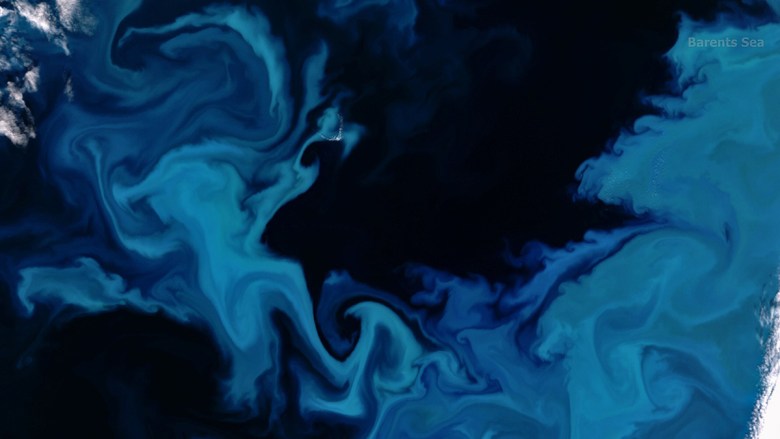
Source: Journal of Geophysical Research: Biogeosciences
Phytoplankton are small but mighty. As one of the biggest drivers of primary production in Earth’s oceans, they convert sunlight and carbon dioxide (CO2) into chemical energy, forming the base of the aquatic food web and transferring about 10 billion metric tons of carbon from the atmosphere to the deep ocean annually.
Despite being the most abundant element in Earth’s atmosphere, nitrogen is the limiting factor for phytoplankton growth in much of the ocean. This is especially true in the Arctic Ocean, where geographic and climatic factors contribute to a particularly complex nitrogen cycle.
Arrigo et al. review current knowledge of how nitrogen enters Arctic waters and changes forms, as well as how these dynamics could shift in a changing climate.
Among the most important sources of nitrogen to the Arctic Ocean are horizontal flows of water from other oceans—most notably the Atlantic, which transports almost 4 times as much water into the Arctic as the Pacific. Other sources include upwelling and rivers.
Nitrogen takes many forms in the ocean, including numerous organic and inorganic species that can be either dissolved or particulate. In early spring, dissolved nitrate is the primary form of nitrogen on the Arctic surface, but phytoplankton consume it rapidly and then turn to recycled ammonium as their primary source later in the season. Much of the particulate organic nitrogen produced as a by-product of phytoplankton growth sinks, and it is deposited either into sediments or into deep water near the seafloor. This organic nitrogen can be consumed by bacteria and transformed into forms that can return higher up the water column or back into the atmosphere to continue the cycle.
The authors suggest that climate change will increasingly affect the Arctic Ocean’s nitrogen cycle. More frequent Arctic wildfires will mean greater carbon and nitrogen emissions. Rising ocean CO2 levels contribute to ocean acidification that is likely to affect nitrification (the conversion of ammonium to nitrite and nitrate), though it’s unclear exactly how. Melting sea ice will likely also have complex effects: More fresh water entering the ocean could lead to increased ocean stratification, but it will also leave more of the ocean open to wind, which could increase ocean mixing and reduce stratification. (Journal of Geophysical Research: Biogeosciences, https://doi.org/10.1029/2024JG008088, 2024)
—Emily Dieckman (@emfurd), Associate Editor
Citation: Dieckman, E. (2024), The many adventures of nitrogen in the Arctic Ocean, Eos, 105, https://doi.org/10.1029/2024EO240360. Published on [DAY MONTH] 2024.
Text © 2024. AGU. CC BY-NC-ND 3.0Except where otherwise noted, images are subject to copyright. Any reuse without express permission from the copyright owner is prohibited.
Related
